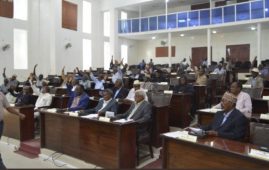(Abel G.)
According to ‘Ethiopia Country Refugee Response Plan” document, published by December 2018, Ethiopia has been hosting refugees according to its agreement to regional and international conventions. Refugees from Eritrea, South Sudan, Sudan, Yemen and Somalia are the once marked bigger number sheltered in Ethiopia. Those refugees, hundreds of thousands in number, are living in camps of Tigrai and the other four emerging regions of the country. In this short summery of the aforementioned document, facts and figures related with the living conditions of the refugees, refuges population planning, response strategies and priorities outfitted with facts and figures of related issues are presented.
The main problem of migration of refugees in Ethiopia is as a result of insecurity, political instability, military conscription, conflict, famine and other problems. Accordingly the country has hosted 892,555 refuges at the start of 2018. This number makes Ethiopia the second refugees’ asylum country in Africa and among the biggest world-wide. And the majority of those refugees are hosted in Tgrai regional state with alarmingly increasing number in all camps of the country. Again, civil war in Sudan, instability in Eritrea and famine in Somalia are still contributing factors for that. Hence, the document mentioned that;
“The South Sudanese are the largest refugee population in Ethiopia, totalling 421,867 persons at the close of 2017. Renewed violence in Upper Nile, Jonglei and Unity States; that increasingly impacted border areas, has resulted in 75,447 new arrivals seeking asylum in 2017. The majority were accommodated through the expansion of Nguenyyiel Camp in the Gambella Region, and in Gure Shembola Camp established in May 2017 in the Beneshangul Gumuz Region. Somalis constitute 28.3 percent of registered refugees, with 6,696 new arrivals during 2017, contributing to a total population of 253,889 individuals. Fleeing generalized instability and a third failed harvest, families were subsequently accommodated across five camps within the Somali region. The Eritrean caseload comprised 164,668 individuals at the end of the year, with 25,265 new arrivals received within the Shire and Afar Regions. Ethiopia also hosts an additional caseload of 52,131 Country Overview – ETHIOPIA RRP 6 ETHIOPIA – COUNTRY RRP > JANUARY-DECEMBER 2017 individuals drawn from across the wider region; including from Sudan (44,386), Yemen (1,771), and other countries” (page 5-6)
There has been an attempt made by the government of Ethiopia to find ways of handling this booming number of refugees including by launching Comprehensive Refugee Response Framework (CRRF). This framework is considered as one of the transforming agendas of the issue. To realize the framework’s agenda different interventions has made in all refugee camps of the country. This intervention has also its own strategy. The main concepts of the strategy are enhancing well being of refugees in all camps including ensuring their lives and peaceful coexistence.
As per the strategy, the intervention includes Biometric Information Management System, Out of Camp Policy, Cash Based Intervention and Security Interventions. All mechanisms are measured according to UN standards. Moreover, those interventions are with sector-specific needs, strategies and objectives. For example under ‘protection’ special focus has given to children, sexual and gender-based violence. The same is goes to access to health and education. Food, shelter and suitable environment in general are parts of these response strategies.
One fact that is boldly pointed out is that those all response mechanisms and the alarmingly increasing rate of refugees are incompatibly matched. Because, this is happening in one of the poor countries of the world; Ethiopia. Now at hand, for refugees only from Eritrea, S.Sudan, Sudan, Somalia and Urban and other Refugees, 618, 514, 146 amount of money is needed for protection, education, food, Health and nutrition, Livelihoods and Environment, Shelter and Wash. To realize the strategy, the government of Ethiopia is working with 50 operational partners including those of commissioning by the UN.
*******





